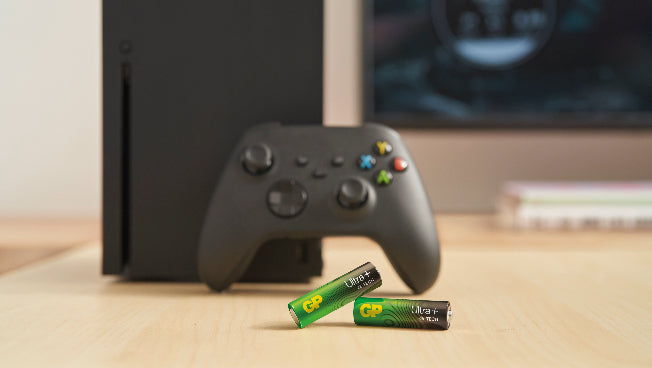

Batteries play a vital role in our daily lives, but what should you do when they reach the end of their lifespan? If you've ever wondered about environmentally-friendly options for disposing of your old batteries, our comprehensive guide to battery recycling and disposal has the answers. Learn about the importance of battery recycling, proper disposal methods, and practical tips to reduce your carbon footprint right here.
Batteries have revolutionised the way we live our lives, but when it comes to the end of these handy portable power suppliers, there’s always a question of what you should do with them. If you’ve always been wondering about how to properly dispose of your old batteries that doesn’t involve adding to a landfill, then read on to discover everything you need to know about disposing your batteries the right way and how battery recycling can help save the Earth one battery at a time!
Why is Battery Recycling Important?
Batteries contain chemicals and heavy metals that can be harmful to the environment if they are not disposed of properly. By recycling them, we can not only prevent these by-products from being improperly disposed of, but we can also recover the materials used to make these batteries and reuse them. Many of the materials used in batteries are non-renewable resources, hence by recycling batteries, we can reduce our reliance on virgin materials and conserve valuable resources.
Recycling batteries also requires less energy than producing new batteries from raw materials. This is because the recycling process involves extracting and refining materials, rather than mining and processing raw materials. This means that recycling batteries can help to reduce the energy consumption and associated greenhouse gas emissions that come with battery production. By recycling batteries that would otherwise be disposed of, we’re following the principle of “Reduce, Reuse, Recycle” and doing our part to minimise waste and environmental damage.
At GP, we’re committed to developing more sustainable sources of power by working towards zero waste in our battery manufacturing facilities. We’re also constantly looking for new ways to increase the use of recycled materials in our battery products, with many of our rechargeable battery products comprising at least 10% recycled materials.
How to Properly Dispose of Batteries


1. Battery Recycling
Instead of throwing out your used batteries alongside your regular household waste, try to find your local battery recycling service and drop them off there to be recycled instead. Improper disposal of old batteries often result in the batteries contaminating the landfill sites, which then contributes to air, water, and soil pollution. Both single-use and rechargeable batteries can be recycled, so check your local council and recycling centres to find where to recycle your used batteries; some supermarkets and DIY centres also offer battery recycling services.
2. Proper Disposal of Leaking Batteries
Battery leakage can happen due to a number of reasons such as being left without power for too long, left in a device for too long while empty or simply due to gas forming in the battery. When encountering a leaking battery, it’s advisable to avoid contact with skin and wash your hands and skin as thoroughly as possible if contact does occur. When disposing of it, make sure to place the affected battery into a non-metal container or plastic bag to avoid further damage to other items it may accidentally come into contact with. Once the battery is contained and unable to contaminate other items, proceed to recycle the battery at your local recycling centre.
3. Other Safety Measures
It’s recommended that you tape the contact areas of each battery before disposing of them. Used batteries are often not fully discharged and leaving their contact areas exposed can bring live batteries into contact with each other which may create safety risks. However, it’s important to ensure the battery type is still identifiable at the recycling centre, so it’s recommended that you cover the positive terminal of the battery with protective caps or masking tape when grouping used batteries for disposal.
When sorting through the batteries you wish to dispose of, avoid doing it near young children or pets as small batteries can cause serious internal injury or death if swallowed. If your child or pet swallows a battery, please seek immediate medical attention.
What Else Can You Do to Lower Your Carbon Footprint?


Unfortunately, there is no perfect, 100% environmentally-friendly power solution. However, reducing, reusing, and recycling are some of the ways you can significantly lower your carbon footprint. Consider swapping single-use batteries for rechargeable batteries where possible too. More people using rechargeables instead of single-use batteries minimises the number of batteries entering our landfills, as a single rechargeable battery can replace hundreds of single-use batteries. From the eco-friendliness to the significant cost savings of using rechargeable batteries, there’s never been a better time to switch to rechargeables.
Another way you can reduce your consumption levels is by removing your batteries from their devices when not in use to prolong their lifespan. It’s also recommended that you remove your rechargeable batteries from the rechargeable battery dock once they’re fully powered up to avoid overcharging and wasting electricity.
Small changes can make all the difference for a better tomorrow, even if it seems as trivial as disposing of your old batteries, so whenever possible, do consider recycling your old batteries, and swapping out your regular batteries with rechargeable ones to reduce your carbon footprint in the long run. Ready to make the switch? Check out GP Batteries’ wide range of rechargeable power solutions today!





